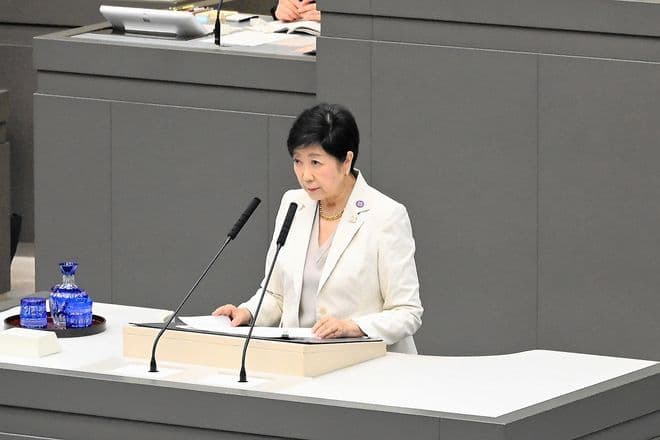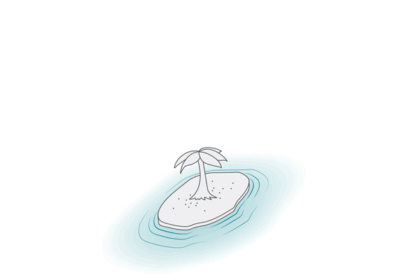A new rule for safer, neater streets
Tokyo will move to ban the construction of utility poles in new housing and land developments, a step designed to speed the shift to underground power and communications lines and to strengthen disaster readiness. Governor Yuriko Koike unveiled the plan in an address to the metropolitan assembly on Sept. 24. The proposed ordinance would be the first of its kind in Japan and would extend existing restrictions beyond roads administered by the metropolitan government to include private roads and newly created plots.
- A new rule for safer, neater streets
- What exactly will change for new developments
- Why Tokyo wants lines underground
- Costs, construction and trade-offs
- How Japan is moving nationwide
- Cityscape, tourism and accessibility gains
- How other cities handle undergrounding
- Public input and the legislative path
- Key Points
Officials say nearly all areas of the 23 wards are expected to be designated. Developers would be required to submit written plans that show how their projects will be built without overhead poles and cables. If developers fail to comply, the city could disclose the names of offending parties and issue guidance and recommendations. The goal is to set a clear default for new neighborhoods, so that underground lines are planned from the start rather than added later at higher cost.
Tokyo is accepting public comments for one month before finalizing a draft ordinance. The need for change is pressing. Each year in the capital, about 500 housing land projects that include new roads go forward, and those projects typically install around 850 new poles. During large storms or earthquakes, fallen poles can block narrow streets and slow emergency access. City officials also worry that public authorities cannot easily remove poles on private roads during a crisis, which can prolong outages and keep air conditioning and lighting offline when they are needed most.
After recent tornado damage in Makinohara in Shizuoka Prefecture renewed concern about overhead lines, Koike urged a rethink.
The circumstances surrounding utility poles should be thought over again.
Tokyo adopted a rule in 2017 that generally bars new utility poles along metropolitan roads, and the new measure would build on that foundation.
What exactly will change for new developments
The ordinance would shift the default design of new neighborhoods away from poles and overhead cables. It would require developers to integrate underground conduits for electricity and communications at the initial planning stage and to coordinate with utilities before construction permits are issued. The approach covers private roads and common areas in newly created subdivisions, not only streets managed by city agencies. The first phase is set to focus on the 23 wards, with emphasis on areas inside Route 7 where seismic risk and density are high. Officials have discussed a wider rollout across the metropolis after the initial zones are in place.
Where the rules apply
Under the plan, nearly all districts in the 23 wards are expected to be within the designated area. The intent is to prevent a patchwork in which some blocks bury lines and others still add new poles. New streets, laneways, and private roads that serve housing complexes would be included. A consistent standard across contiguous neighborhoods makes it easier for power and telecom companies to design shared corridors and reduces the likelihood that a single property owner holds up a project.
How enforcement will work
Developers will submit written plans laying out how they will deliver without poles. The metropolitan government would review those plans and can issue guidance and recommendations if a submission falls short. If a builder proceeds with overhead lines in violation of the designation, the city could disclose the party’s name and require corrective measures. The ordinance is not framed as a fine based system. It relies on clear rules at the permit stage and on transparency once projects are underway. That combination has worked on metropolitan roads since 2017, and the city intends to use similar procedures with private streets.
Authorities expect to finalize a draft after the one month comment period, then send it to the assembly for a vote. If enacted, the rule would apply to new projects going forward, with transitional arrangements for developments already deep into design.
Why Tokyo wants lines underground
Safety is the driver. When strong winds, heavy snow, or earthquakes strike, poles can topple. In dense areas with narrow lanes, a fallen pole blocks access for ambulances and fire engines and can knock out multiple feeders at once. Underground distribution is less exposed to wind and falling objects and frees sidewalks where poles and guy wires now crowd pedestrians and bikes. Tokyo officials have also pointed out a practical problem for first responders. On private roads or within privately owned land, public authorities may not be able to remove poles or clear tangled lines quickly during an emergency, which delays power restoration and road clearance.
Japan’s experience after major disasters underscores the risk. During the 1995 Great Hanshin Earthquake, about 8,100 utility poles collapsed, complicating rescue and recovery. Tokyo leaders say that lowering reliance on overhead lines in new neighborhoods reduces the chance that critical streets will be blocked and keeps essential services running longer. The policy is aimed at building resilience into the urban fabric before the next disaster arrives.
Costs, construction and trade-offs
Undergrounding is expensive. Building duct banks, handholes, and manholes and then placing cables beneath finished streets costs far more than stringing wires on poles. Estimates used by Japanese authorities put the typical cost at about 200 million yen per kilometer, roughly ten times the cost of new overhead lines. Night work to reduce traffic disruption adds labor expense, and narrow streets force contractors to move carefully around water, gas, and sewer lines.
What it costs and who pays
To offset the jump in upfront costs, Tokyo offers subsidies to developers that install underground lines in new housing projects, with support reportedly up to 40 million yen per development. Even with assistance, many builders have favored overhead lines because buyers rarely see cables as a selling point, and undergrounding adds to unit prices or rents. The ordinance changes that calculation by making underground corridors a standard part of building a new street, similar to water and sewer. When trenching occurs at the same time a road is built, costs drop compared with retrofits years later.
The financial question extends beyond builders. Power and telecom companies must invest in new cables and equipment, which is usually recovered over time through rate structures. Some cities address the burden with long term plans that bundle multiple streets into one contract, seek central government support, and coordinate digs so that utilities share a common trench. That sort of coordination is expected to be central in Tokyo’s approach.
Benefits and drawbacks underground
Underground lines are shielded from wind, falling tree limbs, and ice. Fewer wires aloft also reduces the risk that vehicles or construction machinery will snag a line. Outages during typhoons tend to be shorter where a larger share of the grid is underground. There are trade-offs. Floods and landslides can make access to underground infrastructure slower, and crews may need to pump water before repairs. The engineering response is to use sealed vaults, raise equipment where possible, and include spare conduits so that new cables can be pulled quickly if one fails.
Tokyo’s streets present their own challenges. Many older neighborhoods have limited right of way, and placing multiple ducts within tight corridors requires careful mapping and long lead times. That is one reason the city is starting with new developments, where projects can be designed from a clean sheet and where space for utility corridors can be set aside in advance.
How Japan is moving nationwide
National policy is heading in the same direction. The Ministry of Land, Infrastructure, Transport and Tourism (MLIT) is preparing a new five year plan starting in fiscal 2026 that will accelerate the removal of poles along emergency transport routes in urban areas. The target is to complete work along about 21,826 kilometers of these high risk corridors by fiscal 2030. As of the end of fiscal 2024, work had been completed on roughly 35 percent of the priority sections. Tokyo’s proposal aligns local rules with that national push by making undergrounding the default for new streets, while MLIT focuses on the roads that carry emergency vehicles and supplies after a disaster.
Cityscape, tourism and accessibility gains
Removing a forest of wires from the skyline changes how a city feels. Tokyo has piloted sections with buried lines for years, including streets in Sumida Ward where views toward landmarks are cleaner. The benefits go beyond aesthetics. Poles and guy wires narrow sidewalks and create hazards for people using wheelchairs, strollers, or canes. Clearing that clutter improves safety and access.
Progress has been slow across Japan because of cost. Even in the country’s biggest cities, the share of underground lines remains modest. In central Tokyo, only a small portion of road power lines are underground, with rates in other major cities such as Osaka and Kyoto even lower. Efforts in Kyoto to preserve scenic streets have struggled due to budget constraints, and local leaders have shifted limited funds toward main roads used by emergency vehicles. These examples highlight why making underground lines the standard in new projects can deliver steady gains at manageable cost, rather than relying only on expensive retrofits on busy existing streets.
How other cities handle undergrounding
International experience suggests that consistent funding and careful sequencing are critical. Some U.S. cities require new subdivisions to bury lines from the start, which avoids costly retrofits later. One approach used elsewhere is to add a small, time limited charge on electric bills to fund neighborhood conversions while crews are already in the area. Cities also coordinate with cable and telecom providers so that service drops to homes are moved underground at the same time the main distribution lines are buried. That allows poles to be removed sooner and reduces disruption from repeat construction.
Tokyo’s plan uses a similar logic. By setting the expectation early and aligning developers, power companies, and telecom operators around a single standard, the city can plan common corridors and avoid fragmented projects. Residents in new neighborhoods are more likely to see street work only once, at the time of construction, and enjoy clearer skies and wider sidewalks afterward.
Public input and the legislative path
The metropolitan government is collecting public comments for one month, with submissions accepted until Oct. 24. After that, officials will finalize a draft ordinance and send it to the assembly for consideration, alongside dozens of other bills filed for the current session. If the measure passes, implementation would begin in the designated zones in the 23 wards. Guidance for builders would detail technical standards for ducts and handholes, utility coordination, and the timing of inspections.
Developers with projects on the drawing board can prepare now by mapping utility corridors early, budgeting for conduits, and contacting power and communications providers to align installation schedules. Homebuyers will eventually see fewer wires over new streets and fewer poles on sidewalks, changes that improve safety during disasters and give neighborhoods a cleaner look.
Key Points
- Tokyo plans to prohibit new utility poles in housing and land developments across the 23 wards, extending a 2017 rule that already restricts poles on metropolitan roads.
- Developers must submit written plans that avoid overhead lines. The city can disclose violators’ names and issue guidance and recommendations.
- A one month public comment period ends on Oct. 24, after which a draft ordinance will be finalized and sent to the metropolitan assembly.
- About 500 housing land projects each year in Tokyo typically add around 850 poles. The plan aims to stop that growth and build underground lines from the start.
- Safety is central. Fallen poles can block narrow streets and delay emergency response during earthquakes and storms.
- Undergrounding costs about 200 million yen per kilometer, roughly ten times overhead lines. Tokyo offers subsidies of up to 40 million yen per development.
- Underground systems are less exposed to wind and debris, though floods and landslides can slow repairs. Design choices like sealed vaults and spare conduits reduce downtime.
- Nationally, MLIT aims to complete undergrounding along about 21,826 kilometers of emergency routes by fiscal 2030. About 35 percent of priority sections were finished by the end of fiscal 2024.
- Beyond safety, removing poles improves views, widens sidewalks, and helps people with mobility challenges navigate streets more easily.
- The first phase focuses on the 23 wards, particularly areas inside Route 7, with plans to expand citywide after initial implementation.












